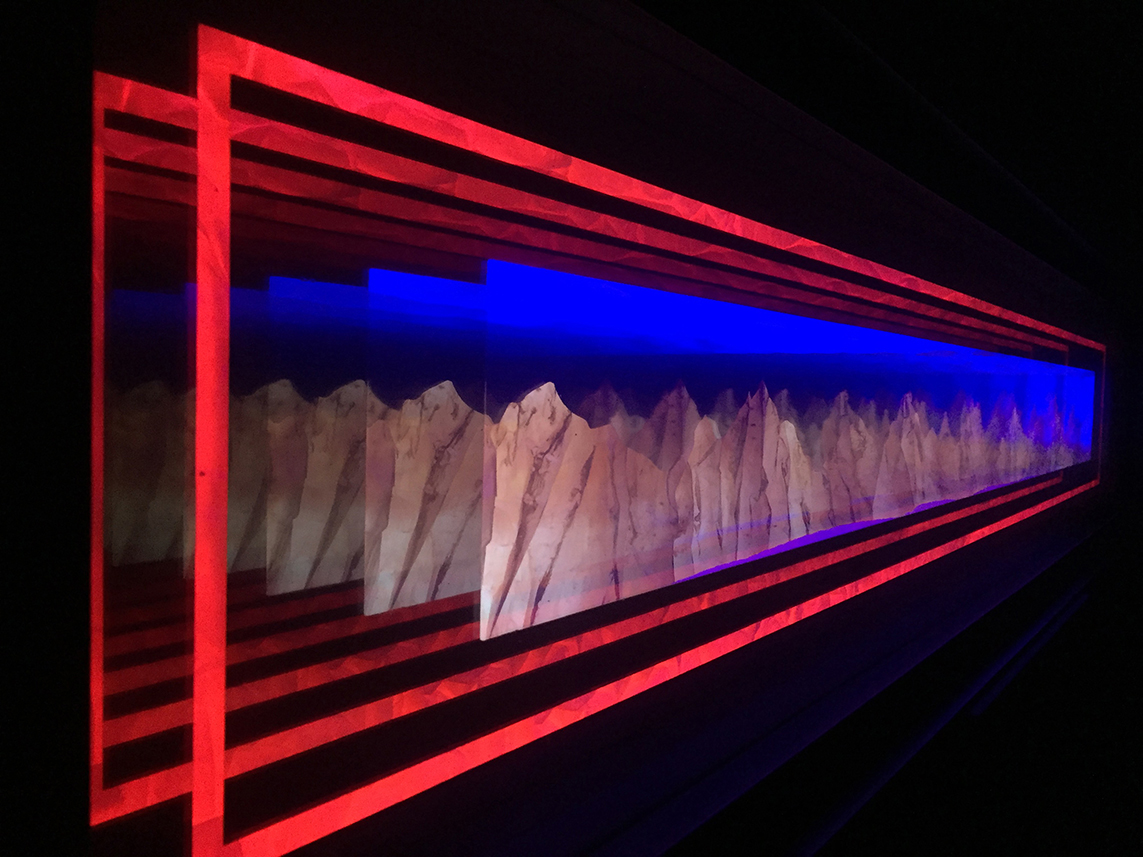
Critica de Waldemar Sommer a la obra lumínica de Gonzalo Sánchez – Pikti
El artista Gonzalo Sánchez exhibe obra de luz y Color. Sobresale “Glaciar” y como el resto de sus obras recurre a materiales poco habituales. Sobre plintos negros de fierro o madera, utiliza papel vegetal, polvo de lapislázuli y de roca cordillerana dispuesto dentro de cajas luminosas infinitas. En el caso de este trabajo “cinético” la obra Glaciar, su imponente soporte adquiere atributos de escultura, además el progreso tecnológico le permite desplegar cambiantes círculos concéntricos de luz coloreada que definen una secuencia dinámica de delicadas coloraciones. Entorna la móvil iluminación, una caja rectangular con papeles angulares, transparentes y asociados a un ventisquero, se trata pues de un diálogo bien administrado entre abstracción y acercamiento figurativo. También protagonizados por colores que se van alternando los tres tótems sostenidos por bloques negros, recuerdan relojes ingleses, acá las variaciones cromáticas-incluyen blanco y negro, lo satura todo, aunque cada una resulta distinta a sus compañeras, el grupo de cuatro “grúas”, por su parte, con formas y materiales similares ofrecen una visión inmóvil y desarrollada en tamaños diferentes. Las casi triangulares hojas de papel ostentan un curioso aspecto vegetal lo cual no impiden que sugieran cordilleras iluminadas por duplas de color.
Waldemar Sommer art critic of the luminous work of Gonzalo Sánchez – Pikti
The artist Gonzalo Sánchez exhibits works of light and Color. “Glaciar” stands out, and he uses unusual materials like the rest of his works. He uses vegetable paper, lapis lazuli powder, and* mountain rock on black iron or wood plinths, arranged inside infinite luminous boxes. In this “kinetic” work, the Glaciar work, its imposing support acquires the attributes of sculpture; in addition, technological progress allows it to display changing concentric circles of colored light that define a dynamic sequence of delicate colors. The mobile lighting surrounds a rectangular box with angular, transparent papers associated with a snowdrift; it is, therefore, a well-managed dialogue between abstraction and figurative approach. Also starring colors that alternate the three totems supported by black blocks, they recall English clocks, here the chromatic variations include black and white, it saturates everything. However, each one is different from its companions; the group of four “cranes,” on the other hand, with similar shapes and materials, offer a still and developed vision in different sizes. The almost triangular sheets of paper show a curious vegetal appearance, preventing them from suggesting ridges illuminated by pairs of colors.
